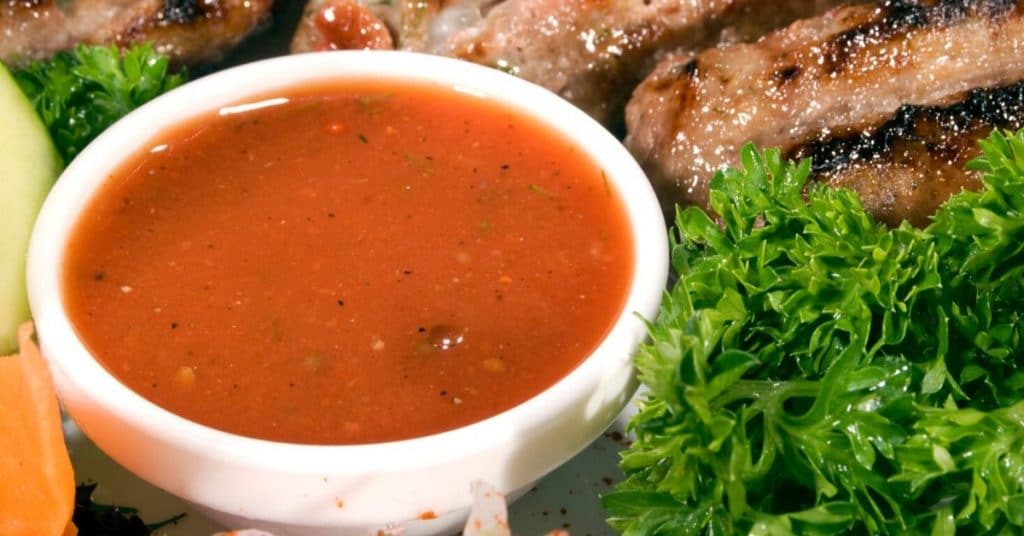In summary: Yes, you can freeze gravy, but cream based gravy is less suitable than flour-based gravy, and you should avoid contamination and store it properly
The perfect accompaniment to round off a lip-smacking meaty meal or mashed potatoes is a hearty home-made gravy. Its rich flavor and smooth texture are the result of hours of cooking, although one can take shortcuts for a faster, more mediocre version of a gravy sauce.
With so much time and care invested in this saucy sensation, it would be a tragedy to waste any leftovers. It can be a temperamental product to store for more than a day.
Here you’ll find out everything you need to know about freezing gravy and how to thaw frozen gravy without spoiling the sauce quality.
Can Gravy Be Frozen?
The perishable nature of this delicious meaty sauce means it only has a lifespan of two hours at room temperature and two days in the refrigerator.
Due to its high fat and dairy content, cream based gravy is not ideal for freezing, but it can be done. Flour-based gravy (brown gravy) however, can be kept in the freezer for a few months if stored correctly.
If you are planning to store gravy leftovers, make sure your family and friends do not dip their food (or fingers) directly into the sauce. Ensure that guests pour the gravy over their food or use a ladle to prevent contamination and growth of harmful bacteria.
How to Freeze Gravy
When you know beforehand that you are planning to freeze gravy, opt for a recipe with little fat, cream, and milk as these ingredients will separate on defrosting.
Here is a step-by-step guide on freezing gravy for later use.
Step 1: Boil and Cool
Before freezing, make sure the gravy has been boiled to kill any harmful bacteria. Cool the gravy completely before freezing. You can speed up the cooling process by placing it in an ice bath.
Never freeze hot gravy. The steam will cause ice crystals to form which will result in freezer burn and an unpalatable texture.
Step 2: Blend
To reduce the chances of your gravy separating during the freezing process (especially cream-based gravy), blend it in a food processor or blender for 20 – 30 seconds.
Step 3: Portion (optional)
If you wish to freeze your gravy in mini-portions you can freeze ice-cube sized servings and simply defrost as much as you need at a time. Pour the cooled gravy into ice cube trays and set it in the freezer until fully frozen. Remove the frozen cubes from the ice cube tray and place them into a zip top freezer bag.
Step 4: Package
If you are freezing a larger amount, pour the cooled gravy into resealable freezer bags or an airtight container. Leave an inch of space as the sauce will expand on freezing.
Whether you have placed frozen gravy ice cubes in a freezer bag or poured the cooled gravy directly into it, make sure to lightly press out any excess air before zipping the seal closed.
Step 5: Label and Date
Mark each packet or container with the date and contents so that you can keep track of how long your gravy has been in the freezer. Remember that cream-based gravy will not last much longer than a week in the freezer, whereas flour-based gravy will last a few months.
How to Defrost and Reheat Gravy
Due to its perishable make-up of ingredients, gravy should never be thawed at room temperature. This will increase the risk of harmful bacteria growth. Here is a short guide to defrost gravy for the best quality preservation.
Step 1: Refrigerate
Remove the container or packet from the freezer and refrigerate overnight to let the gravy thaw naturally.
Step 2: Stir
The thawed gravy will naturally separate during the defrosting process, especially if it contains cream, butter, or milk. Give it a good stir once thawed for a more even consistency.
Step 3: Heat
Pour the gravy into a small saucepan and simmer it on the stove for 2 to 3 minutes while continuously stirring to prevent lumps and disperse the heat evenly.
Step 4: Amend Consistency
If the sauce is too thick, add a small amount of liquid such as stock or water. If, on the other hand, you find your gravy has become very thin during the freezing process, thicken it with a cornstarch paste by dissolving a teaspoon of cornstarch in just enough water to make a loose paste.
Whisk the paste into the sauce and continue stirring until it has thickened in consistency.
Serve immediately.
Types of Gravy
Gravy can come in a wide variety of flavors from beef gravy and chicken gravy to vegetable, cornmeal, turkey, and chili gravy. There are however two main methods in which to prepare gravy, one incorporating cream, butter, and flour, and the other is a lighter version without all the added fat and dairy cream.
Besides the 2 main types of homemade gravy outlined below, one can of course purchase a packet of ‘instant gravy’ from the store, however, this would be classified more as a gravy-flavored sauce than an actual gravy made with meat drippings. There really is no comparison between the quality of the real deal and a packet-substitute.
Cream Gravy
Cream gravy is the home-made result of straining the drippings of roasted meat or poultry.
A roux is made and the meaty juices are then simmered with a combination of flour, fat, cream, or milk to form a rich and velvety sauce.
Considering the variety of perishable ingredients used, gravy does not have a long shelf life and goes off quickly. Cream gravy is traditionally used in biscuits and gravy dishes as well as chicken-fried steak. Cream gravy is also known as country gravy, white gravy or sausage gravy.
Brown Gravy
As with cream gravy, brown gravy is also made with the drippings of roasted meat or poultry, however once cooked with other vegetables or stock, the liquid is thickened with water and wheat flour or cornstarch. Milk can also be added.
FAQ
Conclusion
So much more than just a sauce to drizzle over meat, potatoes, or Thanksgiving turkey, gravy can be incorporated into many dishes for a burst of rich and comforting flavor. Next time you roast a bird or lamb, save those drippings and create a hearty gravy to add into a variety of meals. Your secret weapon for a marvelous dish could just be that extra cube of gravy in the mix.
Always take care to keep your gravy stored in the fridge or well-sealed in the freezer.
Keep in mind that cream-based gravy is highly perishable and does not have a long shelf life. It requires a little more TLC to prevent it from spoiling than most other sauces, but is totally worth it.
Finally, if you have leftover steak to serve with gravy, learn how to warm up steak in our guide.

Image by depositphotos/YAYImages









